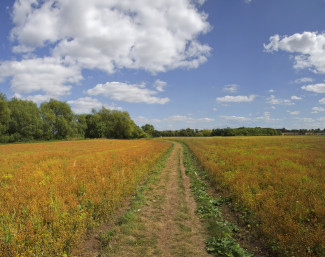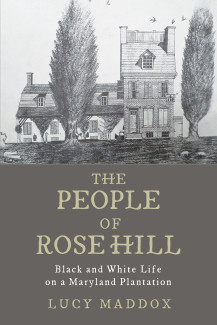
Johns Hopkins UniversityEst. 1876
America’s First Research University
The People of Rose Hill: Black and White Life on a Maryland Plantation

By Lucy Maddox
For anyone who sets out to write a history, the result of finishing such a project has to include a sense of incompleteness. There’s much the writer simply cannot know, but there’s also much the writer can’t include because it’s not sufficiently relevant to the main focus of the work. There is always material that has to be put back—however reluctantly—into its rabbit hole. At the conclusion of a project, the historian’s desk is likely to be littered with stacks of unused notes, even pages of unusable manuscript, that she might find of enormous interest or significance but that just don’t belong in the current book.
My research for The People of Rose Hill left such a pile of notes on my desk. It left several such piles, actually, but the one that most interested me, the one I was most reluctant to put aside, concerned Thomas Forman, the owner of Rose Hill plantation, and his lifelong fascination with horticulture. He spent much time and energy planting trees and flowers on his property; he experimented with new crops and new varieties of familiar crops; he kept records of what he planted and when, and he reported on his successes (and a few failures) in places like The American Farmer, one of the many journals focusing on horticulture and animal husbandry that sprang up in the years following the Revolution. The rise of these journals, as well as numerous state horticultural societies, is evidence that Forman was not alone in his enthusiasm for experimenting with plants; he was part of a widespread movement, represented most famously by another passionate amateur horticulturalist, Thomas Jefferson.

Forman’s interest in experimenting with plants gets some attention in The People of Rose Hill because many of those plants ended up in the gardens, fields, and orchards of Rose Hill. But his interest went beyond his desire to create an enviable homeplace where he could entertain—and impress—his friends and neighbors. His horticultural efforts were, in fact, central to his conception of himself as a post-Revolutionary citizen in a country that was in position to complete the project of independence that had been begun by the war. As a farmer, he saw his role as twofold. He wanted, first, to make his own place, the Eastern Shore of Maryland, a more productive part of the new nation after the flight of farmers (including his own father) from the area because of the depletion of the land by tobacco farming. He was looking for crops that would thrive in the marly soil that was left and would make the Eastern Shore newly prosperous. As he freely acknowledged, his vision for the Eastern Shore depended on slave labor to make the new kinds of farming possible. In the second place, and maybe more importantly, he saw his experiments as having a national and historic significance, since he was determined that the new American nation could free itself from dependence on European imports with the right imagination and the right attention to what could best be grown in this country. He advocated for benne seed oil to replace imported olive oil, home-bred silkworms so that ladies wouldn’t have to depend on French silks for their dresses, merino sheep raised in this country to get around tariffs on imported wool, new varieties of cherries and other fruits, cotton, wheat, and various grasses. He had some successes and, given the fate of the silkworms, at least one disastrous failure.
Forman’s agricultural intentions are interesting as an example of an undertaking that we might not ordinarily think of as a form of patriotism. That subject—the effort to put in place a patriotic agriculture—even if it were limited to the Eastern Shore of Maryland, could easily support a book-length work; there were other farmers who shared Forman’s ideas about crop improvement, and there were other aspects of his plans, such as his desire to modernize farm machinery, that I have not mentioned here. No matter where the research began, however, it would inevitably lead the researcher and the reader of the resulting book to acknowledge a rock-solid fact: that behind the agricultural improvements and the easy gestures to patriotism was the reality of the exploited lives of the slaves who made it possible for men like Forman to be ambitious for himself and his country. The patriotism of Forman and his Eastern Shore colleagues did not just include slavery; it depended upon it. The story of Rose Hill, like other stories about the nation’s founding, is unavoidably the slaves’ story.
Order The People of Rose Hill: Black and White Life on a Maryland Plantation at the following link: https://jhupbooks.press.jhu.edu/title/people-rose-hill
Lucy Maddox is Professor Emerita of English and American studies at Georgetown University. She is the author of The People of Rose Hill: Black and White Life on a Maryland Plantation, The Parker Sisters: A Border Kidnapping, and the editor of Locating American Studies: The Evolution of a Discipline.



